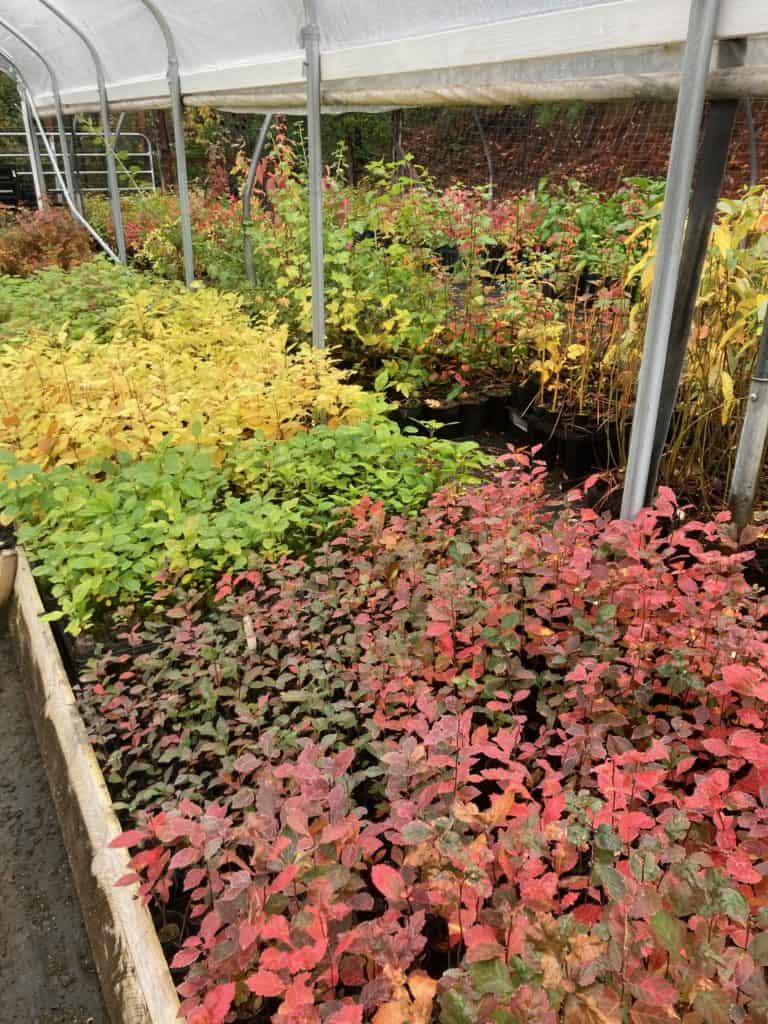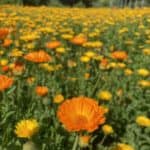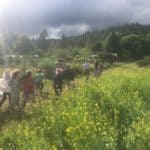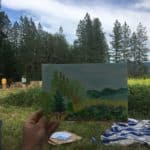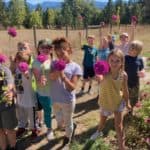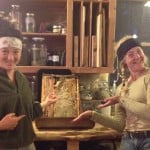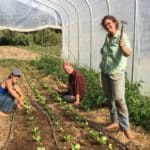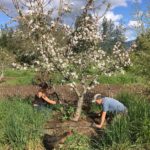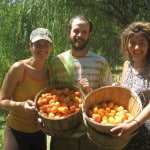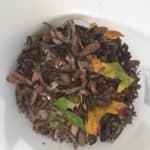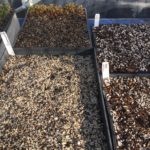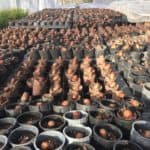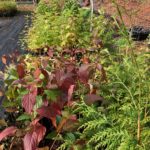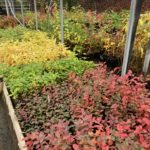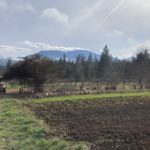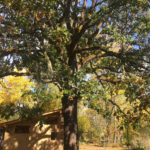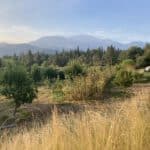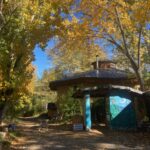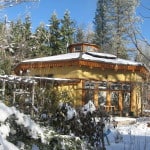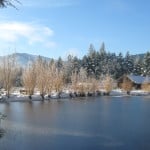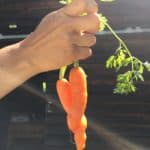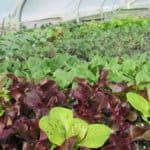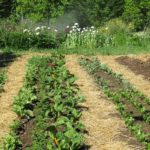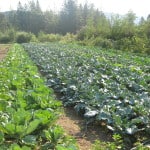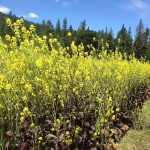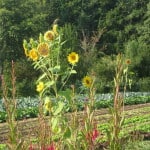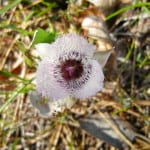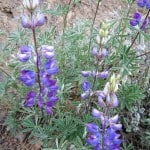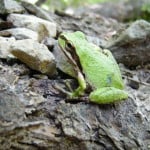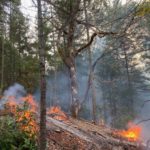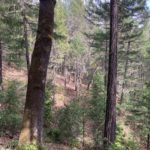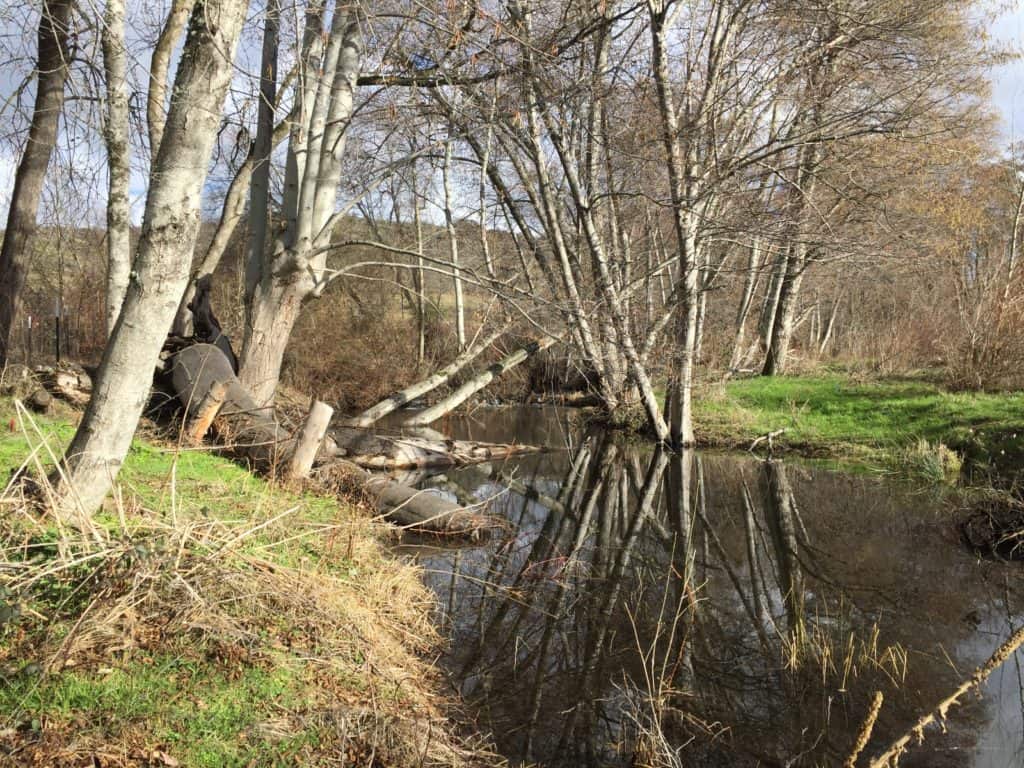
By Nicole Kraft – Nursery Crew Leader
2021 marks the third year of White Oak’s Native Plant Nursery, and a successful one at that. This year we grew and distributed over 30,000 native trees and shrubs of 18 different species for the purpose of riparian restoration throughout Southern Oregon.
These trees and shrubs were grown from hand-collected seed and cuttings, which all require specific treatments and stratification to mimic nature’s processes. In early spring as the seedlings emerged from their peat-filled trays, we individually potted them up into soil-filled nursery containers. Next, we sorted and spaced the plants in order for them to size-up and grow in good form. We watered, loved, and fed them compost tea through the very hot and dry summer months. When Fall arrived and the cool temperatures brought the beginnings of dormancy, we started bundling the plants by species and quantity, preparing them for their final destinations. The cycle continues with new seed collected in late summer put into stratification, plant deliveries, cleaning and organizing the greenhouses, and preparing for winter cuttings.
Riparian zones are the land areas along waterways, streams, and other bodies of water, such as a streambank or a flood plain. They provide critical habitat for diverse fish and wildlife species and important ecosystem services that relate to hydrology, such as water filtration and groundwater recharge. Native plants fill specific roles in the riparian ecosystem, providing canopy and food security for hundreds of species, erosion control and stabilization of stream banks, improved water quality and temperature modulation, and greater resistance and resilience to wildfire.
It will come as no surprise that humans have severely degraded riparian zones- with development, human-constructed dams and removal of the beaver, agricultural run-off and overgrazing, and the list goes on. Exotic plant populations, wildfires, and climate change are also on the growing list of impacts.
It turns out that nursery-grown native plants can be hard to find, especially in significant quantities for larger scale restoration projects. White Oak sees an opportunity in this challenge, and we will continue to do our best to provide healthy native plant species for the important work of restoring the riparian habitat in our Southern Oregon communities.
As always, a huge part of our success comes from our partnerships, mentors, and community support. We have learned from and worked with James Kraemer of Silver Springs Nursery over the last three seasons. He has imparted a great deal of knowledge and wisdom, as well as a passion for plants that is infectious. The majority of our nursery stock is purchased by The Freshwater Trust, a Pacific Northwest-based restoration organization. For the past 8 years TFT has been working on restoration and conservation projects in the Rogue Basin of Southern Oregon, with 30 current restoration sites. We collaborate with the Rogue Native Plant Partnership on native seed sourcing and discussions about the future of restoration. We also work with local landowners and host on-site native plant sales to encourage the education and planting of native riparian plants. Thank you to all who support us and these efforts, and feel free to reach out with any questions about incorporating native plants into your own life!
